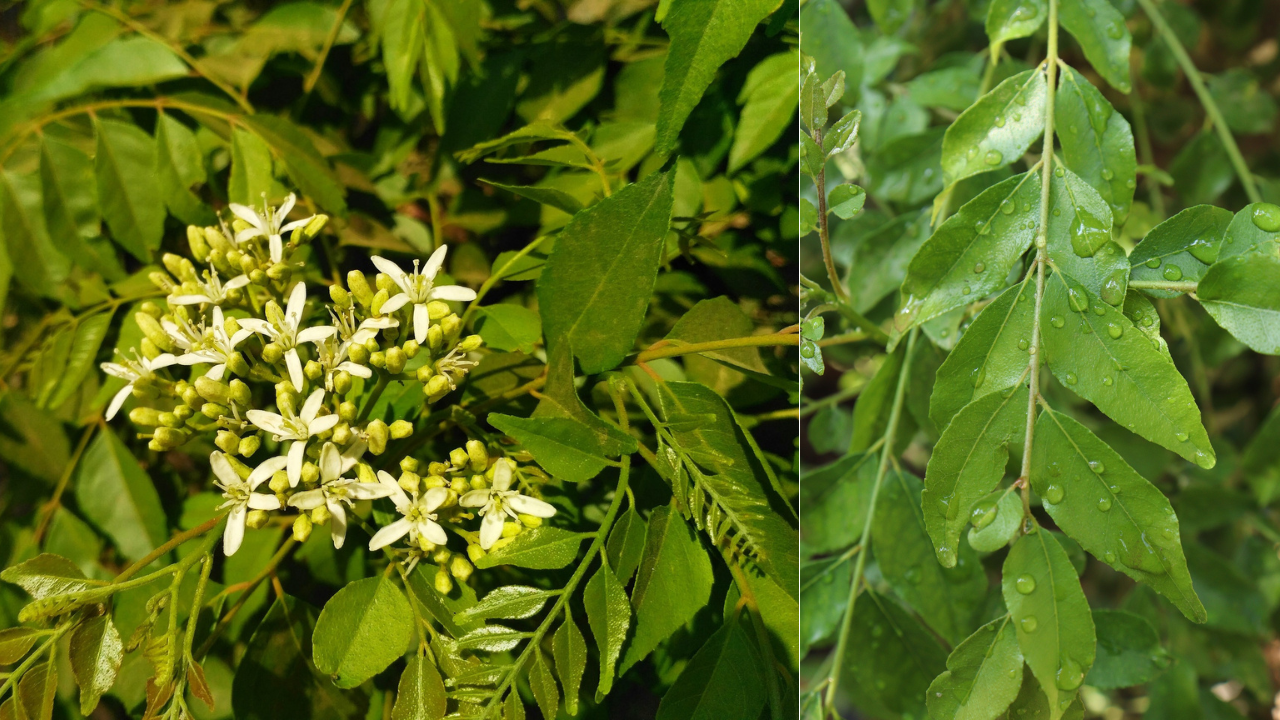Growing kadi patta is easy! Follow our step-by-step guide for success, from seed to harvest.
Introduction to Kadi Patta (Curry Leaves)
Kadi Patta, also known as Curry Leaves, is a staple herb in Indian cuisine, renowned for its distinctive flavor and aromatic qualities. Beyond its culinary uses, curry leaves offer a plethora of health benefits, making them an essential addition to any home garden.
Health Benefits of Kadi Patta
Rich in Antioxidants
Curry leaves are packed with antioxidants that help in neutralizing free radicals, thus reducing oxidative stress and lowering the risk of chronic diseases.
Aids Digestion
The compounds present in curry leaves stimulate digestive enzymes, promoting better digestion and relieving gastrointestinal issues like bloating and indigestion.
Improves Hair Health
Regular consumption of curry leaves or application of its oil can strengthen hair follicles, prevent premature graying, and stimulate hair growth, leaving you with luscious locks.
Selecting the Right Spot for Growing Curry Leaves
Before embarking on your journey to grow curry leaves, it's crucial to identify the ideal location in your garden.
Sunlight Requirements
Curry leaf plants thrive in full sunlight, so choose a spot that receives at least six hours of direct sunlight daily.
Soil Conditions
Ensure the soil is well-draining and rich in organic matter. Sandy loam or clay loam soils with a pH range of 6.0 to 7.5 are optimal for curry leaf cultivation.
Climate Considerations
Curry leaf plants prefer warm, tropical climates. They are sensitive to frost, so if you live in a cooler region, consider growing them in containers that can be moved indoors during winter.
Acquiring Curry Leaf Seeds or Saplings
You can obtain curry leaf seeds or saplings from local nurseries, online stores, or by propagating from mature plants. Opt for healthy, disease-free specimens for the best results.
Preparing the Soil for Planting
Soil Testing
Before planting, conduct a soil test to assess its nutrient content and pH levels. Amend the soil as per the recommendations to create an optimal growing environment for curry leaves.
Adding Nutrients
Incorporate organic compost or well-rotted manure into the soil to improve its fertility and texture. This will provide essential nutrients for healthy plant growth.
Improving Drainage
Ensure proper drainage to prevent waterlogging, which can lead to root rot. Raised beds or adding sand to the soil can help improve drainage.
Planting Curry Leaf Seeds or Saplings
Seed Depth and Spacing
If planting seeds, sow them about ¼ inch deep in the soil, leaving a distance of 6-8 inches between each seed. For saplings, dig a hole slightly larger than the root ball and gently place the plant, backfilling with soil.
Transplanting Saplings
If transplanting saplings, ensure they are well-established with a strong root system. Water them thoroughly after transplanting to help reduce shock.
Watering Techniques
Water the plants regularly, keeping the soil consistently moist but not waterlogged. Avoid overwatering, as it can lead to root rot.
Caring for Curry Leaf Plants
Maintaining optimal care is essential for the healthy growth of curry leaf plants.
Watering Frequency
During hot weather, increase the frequency of watering to keep the soil moist. In cooler months, reduce watering but ensure the soil doesn't dry out completely.
Fertilizing Needs
Apply a balanced fertilizer rich in nitrogen, phosphorus, and potassium every 4-6 weeks during the growing season to promote lush foliage and robust growth.
Pruning and Trimming
Regularly prune the plants to remove dead or yellowing leaves, promote bushier growth, and maintain an attractive appearance.
Harvesting Curry Leaves
Timing of Harvest
You can start harvesting curry leaves once the plant reaches a height of around 6-8 inches. Avoid harvesting more than one-third of the foliage at a time to allow the plant to continue growing.
Methods of Harvesting
Gently pluck the fresh, green leaves from the stems using your fingers or scissors. Harvested leaves can be used immediately or stored for later use.
Storage Tips
To prolong the shelf life of curry leaves, store them in an airtight container or ziplock bag in the refrigerator. Alternatively, you can freeze them for long-term storage.
Using Curry Leaves in Cooking
Curry leaves add a unique flavor and aroma to various dishes, enhancing their taste and nutritional value.
Traditional Indian Dishes
In Indian cuisine, curry leaves are a common ingredient in curries, soups, stews, and rice dishes, imparting a distinctively fragrant flavor.
Innovative Recipes
Get creative with curry leaves by incorporating them into fusion dishes, salads, chutneys, marinades, and even desserts for a delightful twist.

Conclusion
Growing your own Kadi Patta (Curry Leaves) at home is a rewarding experience that offers a fresh and readily available supply of this versatile herb. By following the simple steps outlined above, you can enjoy the convenience of having a constant source of fresh curry leaves to elevate your culinary creations and reap the numerous health benefits they offer.
FAQs
-
Can I grow curry leaves indoors?
- Yes, you can grow curry leaf plants indoors, provided they receive adequate sunlight and proper care.
-
How long does it take for curry leaf seeds to germinate?
- Curry leaf seeds typically germinate within 2-3 weeks under optimal conditions.
-
Are curry leaves and curry powder the same?
- No, curry leaves are fresh aromatic leaves used in cooking, while curry powder is a blend of various spices used to flavor dishes.
-
Can I use dried curry leaves instead of fresh ones?
- While fresh curry leaves offer the best flavor and aroma, dried curry leaves can be used as a substitute, albeit with a slightly different taste.
-
Do curry leaf plants require pruning?
- Yes, regular pruning helps maintain the health and shape of curry leaf plants, encourages bushier growth, and removes dead or diseased foliage.

